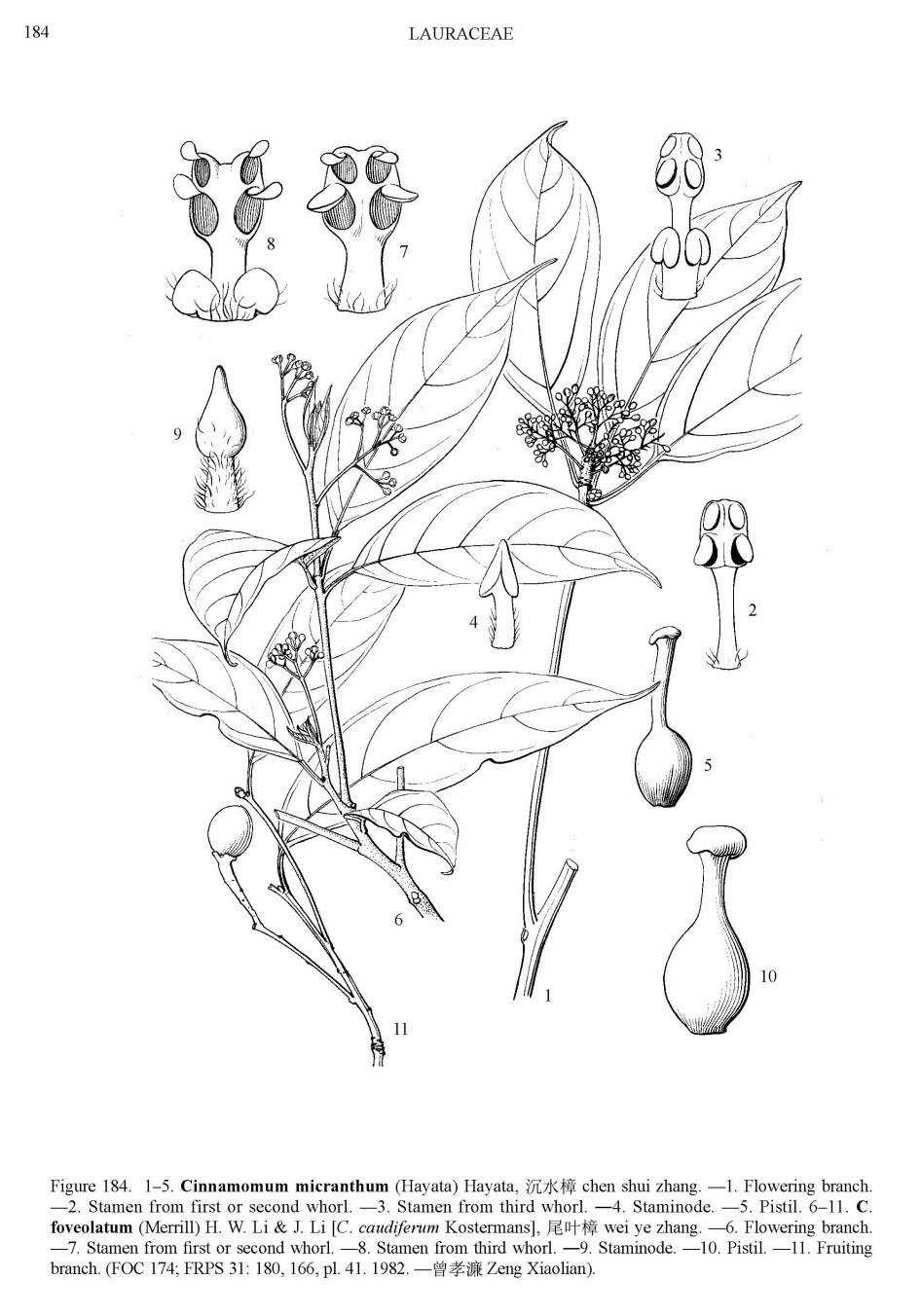Cinnamomum micranthum (Hayata) Hayata syn. C.xanthophyllum H.W.Li. - Lauraceae - 沉水樟 chen shui zhang (chin.), Small-flower Camphor (China, Taiwan)
Cinnamomum micranthum f. kanehirae (Hayata) S.S.Ying = Cinnamomum kanehirae Hayata - Stout Camphor (Taiwan)
Tree, up to 14-20(-30)m tall; bark rigid, up to 4 mm thick, black-brown or reddish brownish gray outside, brown inside, irregularly and longitudinally fissured; leaves alternate, always inserted on upper part of young branchlets; petiole tea-brown, 2-3 cm, leaf blade yellow-brown abaxially and yellow-green adaxially when dry, oblong-elliptic or ovate-elliptic, 7.5-9.5(-10) × 4-5(-6) cm, papery to subleathery, glabrous on both surfaces, pinninerved, lateral veins 4 or 5 pairs; flowers white or purple-red, scented, ca. 2.5mm; fruit shiny, greenish when fresh, ellipsoid, 1.5-2.2 × 1.5-2cm.
http://www.efloras.org/florataxon.aspx?flora_id=2&taxon_id=200008714
„… C. kanehirae is an endangered wood species, which also plays an important economic and ecological role in Taiwan. Cinnamomum kanehirae and C. micranthum have different fruits, but otherwise they are difficult to differentiate due to their similar morphologies. Both species grow in similar habitats, at 200-2000 m elevation throughout the island of Taiwan.“
[Wu, Chia-Chen, et al. „Comparative analysis of the complete chloroplast genomic sequence and chemical components of Cinnamomum micranthum and Cinnamomum kanehirae.“ Holzforschung 71.3 (2017): 189-197]
„Cinnamomum kanehirae and C. micranthum are two native tree species very similar in the gross morphology… Major component of wood essential oil is terpinenol for C.kanehirae and safrol for C.micranthum.“
[林讚標. „牛樟與冇樟.“ 林業試驗所研究報告季刊 8.1 (1993): 11-20]
„All 15 Stout Camphor essential oil samples purchased from markets were found to contain safrole, in levels ranging from 37.65 to 355.07 mg/g. The upper layer of Small-flower Camphor essential oil did not have a detectable level of safrole, whereas the lower layer of the essential oil had up to 642.98 mg/g of safrole. The safrole levels in the remaining essential oil samples were as follows: cypress oil, 129.11 mg/g; natural peppermint oil, 35.28 mg/g; China oil, 109.56 mg/g; Pak Fah Yeow, 33.37 mg/g; Green oil, 0 mg/g; and Cardamom flower oil, 22.06 mg/g. The results indicated that many of the Stout Camphor essential oils and other essential oils available on the market have high levels of the carcinogenic agent safrole.“
[Chan, Sheng-Ching, Youk-Meng Choong, and Shun-Hsiang Weng. „Rapid Method for The Gas Chromatographic Quantitative Analysis to Determinate Safrole in Commercial Essential Oils.“ Journal of cosmetic science 69.2 (2018): 145-156] http://203.71.232.26/ir/bitstream/987654321/3568/2/%E7%BF%81%E9%A0%86%E7%A5%A5Rapid%20Method%20for%20The%20Gas%20Chromatographic%20Quantitative%20p145-p156.pdf
Cinnamomum micranthum extract (syn. Cinnamomum kanehirae extract) = CAS 93062-66-9 TGSC or essential oil could be used as source of safrole to produce 'natural' piperonal (Autooxidation/GMO E.coli). Factsheet Piperonal (Aromenverband)


